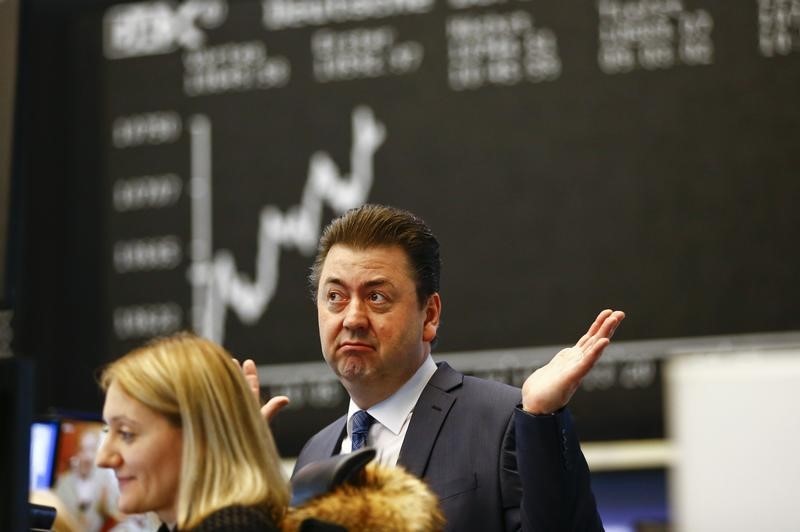 © Reuters. Global wealth – a rising tide lifts all yachts: McGeever
© Reuters. Global wealth – a rising tide lifts all yachts: McGeever(The opinions expressed here are those of the author, a columnist for Reuters.)
By Jamie McGeever
LONDON (Reuters) – As the debate over wealth inequality rages, a paradox is expected to play out over the next five years: the share of people in the lowest strata will decline, while the wealth of the world’s richest will grow faster than any other group.
These projections from Credit Suisse ‘s Global Wealth Report will be seized upon by proponents of the view that the wealth gap is narrowing, however slowly, and those who argue that the ultra-rich getting richer is no cause for celebration.
The “Paradise Papers” leaks this month revealed the lengths to which some of the world’s wealthiest individuals and institutions go to minimize their tax payments, and re-ignited the debate over wealth inequality.
Whether it’s tax avoidance (technically legal but morally questionable) or evasion (outright illegal), the documents shone a light on the financial affairs of the rich and ultra-rich. “One rule for them and one for everyone else” was a common reaction to the revelations.
So, do Credit Suisse’s projections point to global inequality narrowing or not? Let’s consider the argument that it does.
According to the Swiss bank’s projections, global wealth will rise by more than a fifth to $341 trillion in 2022 from $280 trillion this year. The proportion of adults with a net worth of $10,000 or less is expected to fall sharply to 66.4 percent from 70.1 percent currently.
That’s a sizeable decline, and clear evidence that the world’s poorest are, on aggregate, moving up the wealth ladder.
Most of that shift will see the global middle class – defined by those with a net worth of between $10,000 and $100,000 – swell to 24.4 percent of all adults from 21.3 percent currently.
That will represent the biggest increase of all the four wealth segments in Credit Suisse’s report. Some 230 million people around the world are set to move up to “middle class” status over the next five years, with two in five of those in China alone.
In 2000, emerging market countries held 11 percent of the world’s wealth. That nearly doubled to 19 percent this year and is expected to rise further to 22 percent by 2022. The annual rate of wealth generation in emerging markets is projected to be 6.5 percent over the next five years, double the rate of developed markets.
So, the world’s poorest countries are getting richer.
BABY, YOU’RE A RICH MAN TOO
Yet despite all that, the rich are getting richer at an even faster pace.
As Credit Suisse (SIX:) recognizes, wealth inequality has “trended upwards” in recent years, propelled in part by the rising share of financial assets.
Credit Suisse uses three components to measure wealth – financial assets (like stocks and bonds), non-financial assets (like property) and debt. Of those, the biggest change in recent years has been in financial assets, which have soared.
This benefits the rich, especially the ultra-rich. The top 1 percent of wealth owners now hold more than half of all financial assets, rising from 42.5 percent at the depths of the global crisis in 2008.
The top 1 percent also held 43 percent of all the varieties of global wealth in 2008. By the middle of this year, their share had grown to 50 percent.
That bears repeating: the richest 1 percent of the world’s population now owns half of its wealth. And there’s no sign of that receding.
“No other part of the wealth pyramid has been transformed as much since 2000 as the millionaire and ultra-high net worth individual segments,” Credit Suisse said in its report.
“The number of millionaires has increased by 170 percent, while the number of ultra-high net worth individuals (with net worth of $50 million or more) has risen five-fold, making them by far the fastest-growing group of wealth holders.”
Over the next five years the number of dollar millionaires is expected to rise by more than a fifth to 44 million from 36 million today.
The number of ultra-high net worth individuals is set to climb by even more, by 45,000 to 193,000 individuals in five years’ time. That’s a rise of over 30 percent.
The number of rich and super-rich in emerging countries is expected to rise “substantially” over the next five years. Credit Suisse anticipates a rise of more than 40 percent in the ranks of Chinese millionaires, more than 50 percent across India and Latin America, and more than 70 percent in Africa.
So, not much trickle down after all. A rising tide lifts all yachts, you might say.
Source: Investing.com




























